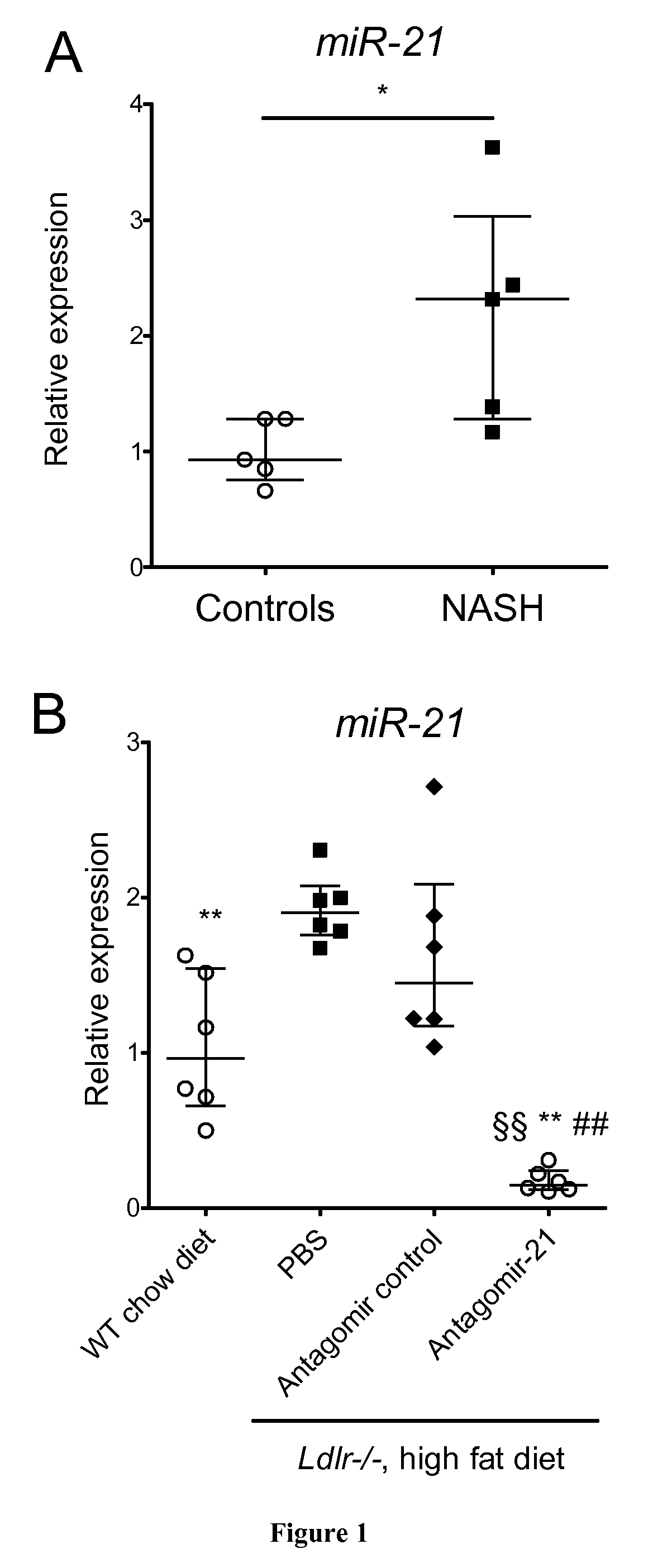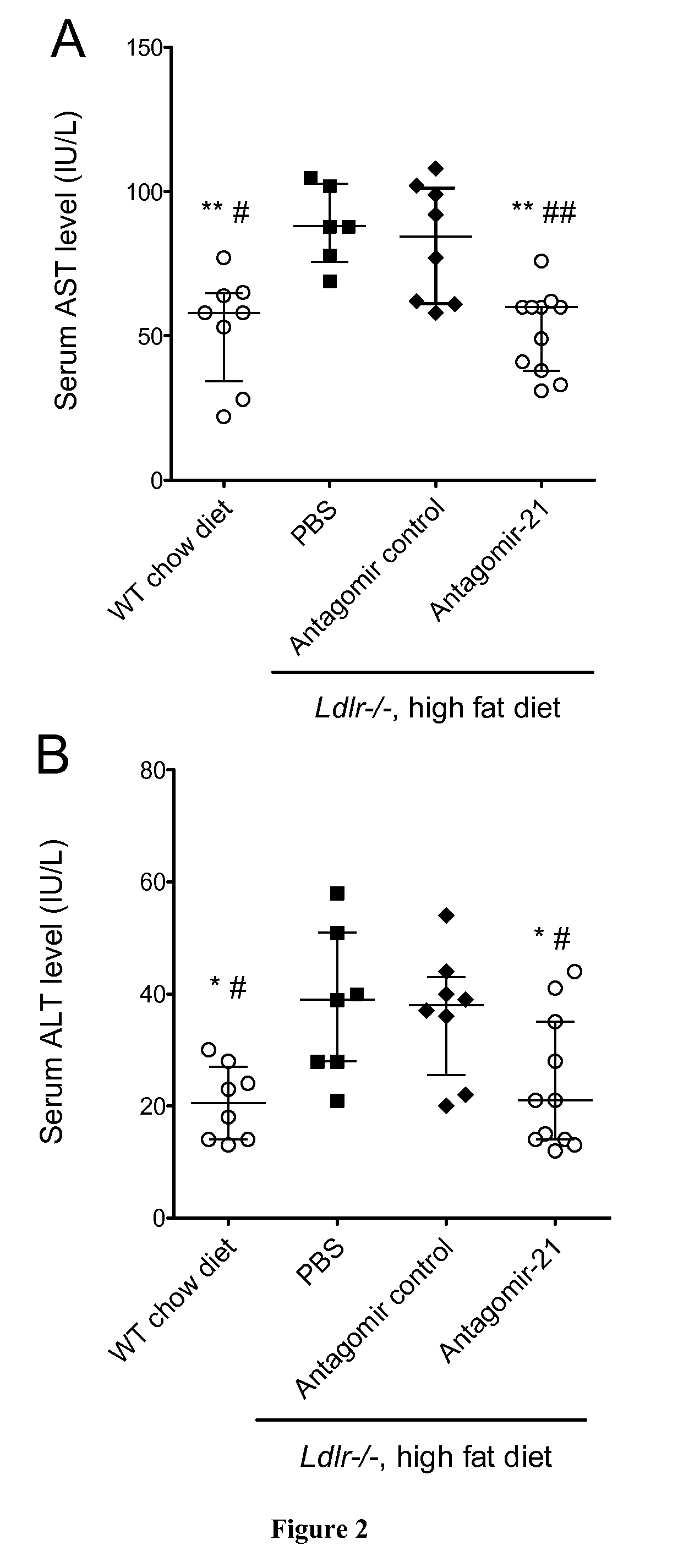Methods for the treatment of nonalcoholic steatohepatitis
a nonalcoholic steatohepatitis and treatment method technology, applied in the direction of dsdna viruses, immunological disorders, drug compositions, etc., can solve the problem of not being approved for nash treatmen
- Summary
- Abstract
- Description
- Claims
- Application Information
AI Technical Summary
Benefits of technology
Problems solved by technology
Method used
Image
Examples
example
Methods
[0072]Patients
[0073]Ten patients who underwent liver resection between February and June 2012 were included. Five had NASH defined using the SAF score {Bedossa, 2012 #76} and 5 had no or mild abnormalities at liver histological examination. All patients gave informed consent. Patients' features are presented in Table 1.
[0074]Animals
[0075]All mice were on a C57BL / 6 background. Eight-week-old male Ldl receptor-deficient (Ldlr− / −) (Charles River, L'isle d'Abresle, France) mice were put on a high fat diet containing 1.25% cholesterol and 15% cacao butter (Safe Diets) for 14 weeks. When 12 and 17 week old, mice received a retroorbital intravenous injection of antagomir-21 (sequence 5′-UCAACAUCAGUCUGAUAAGCUA-3′; 16 mg / kg body weight, VBC Biotech, Vienna, Austria), or of antagomir control (sequence 5′-AAGGCAAGCUGACCCUGAAGUU-3′; 16 mg / kg body weight; VBC Biotech Vienna, Austria) or of phosphate buffer saline (PBS). All mice groups were euthanized at the age of 22 weeks. All experimen...
PUM
| Property | Measurement | Unit |
|---|---|---|
| number-average molecular weight | aaaaa | aaaaa |
| number-average molecular weight | aaaaa | aaaaa |
| temperature | aaaaa | aaaaa |
Abstract
Description
Claims
Application Information
 Login to View More
Login to View More - R&D
- Intellectual Property
- Life Sciences
- Materials
- Tech Scout
- Unparalleled Data Quality
- Higher Quality Content
- 60% Fewer Hallucinations
Browse by: Latest US Patents, China's latest patents, Technical Efficacy Thesaurus, Application Domain, Technology Topic, Popular Technical Reports.
© 2025 PatSnap. All rights reserved.Legal|Privacy policy|Modern Slavery Act Transparency Statement|Sitemap|About US| Contact US: help@patsnap.com



